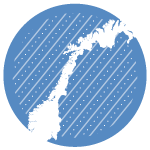UAMs do not usually live in foster care while their asylum application is being processed, apart from occasionally in the case of the youngest ones. Once they receive a residence permit, they can live in a foster family. However, this does not happen very often as there is a lack of foster families. Because of this, it is estimated that around 5% of all UAMs in Norway live in foster care. Some UAMs also live with family members or families within their network. Regulations and recommendations for regular foster homes are followed in such cases.
Bufdir is the central governmental office under the Ministry of Children, Equality and Social Inclusion that is responsible for the welfare and protection of children and families.
The Foster Care Service of its division Bufetat is responsible for recruiting and coordinating families who assume responsibility for fostering a child or young person, and for ensuring that the families receive the necessary training and guidance. The service assists the local authorities with placement, monitoring and termination of foster care. Bufetat can also assist local authorities with the recruitment, training and guidance of supervisors.
Contact
Bufetat
www.bufetat.no
Oslo
A good and unique example are the group foster homes provided by BYMIF, the centre for UAMs in the district Gamle Oslo within the municipality of Oslo. The centre was founded in 1982 and has since then offered individual help to over 700 children and youths. The 14 other districts within Oslo, as well as other municipalities, can buy in services that BYMIF offers, which include places in the group foster homes, counselling and kveldstilbudet (social activities for the minors such as homework support, lessons in Norwegian and holiday activities).
BYMIF leases the 4 group foster homes from the municipality. The foster carers who live there come from mixed cultural backgrounds and pay rent to BYMIF. On average, foster carers take care of a group foster home for 2 years. If they quit their job in the home, they move out and a new foster carer moves in to take care of the minors living in the home. Both the foster carers and the minors living in the homes help new minors to find their way in daily life. A social worker from BYMIF has meetings within the home once a month, has meetings with the foster parents individually and also makes sure that each foster carer receives appropriate training to be able to do the job. BYMIF also has a fifth home that functions as a weekend/holiday home for the foster parents of the group foster homes. They all have a ‘stand-in’ carer who comes to the house every other weekend. This enables the foster carer to take a weekend off, when they can go and stay in the fifth home or elsewhere.
Contact
Municipality of Oslo
Byomfattende senter for enslige mindreårige flyktninger (BYMIF)
Platous gate 16, 0190 Oslo
+47 23 43 13 00
www.oslo.kommune.no/english
Stavanger
Another example is Stavanger, which has around 250 children aged under 18 in care and 150 in aftercare. 80 of them are unaccompanied, and around 35 are still minors. The child protection services of Stavanger became responsible for this group in 2010, when the government decided that UAMs under 15 should be in the child welfare system. 10 of the 45 UAMs in Stavanger are in foster care. Most families are recruited by the municipality itself; only 2 families were recruited by Bufetat. The head of the child protection services has experienced that many UAMs want to be in Norwegian families, although they think it is also important to maintain an attachment with their own culture and language.

